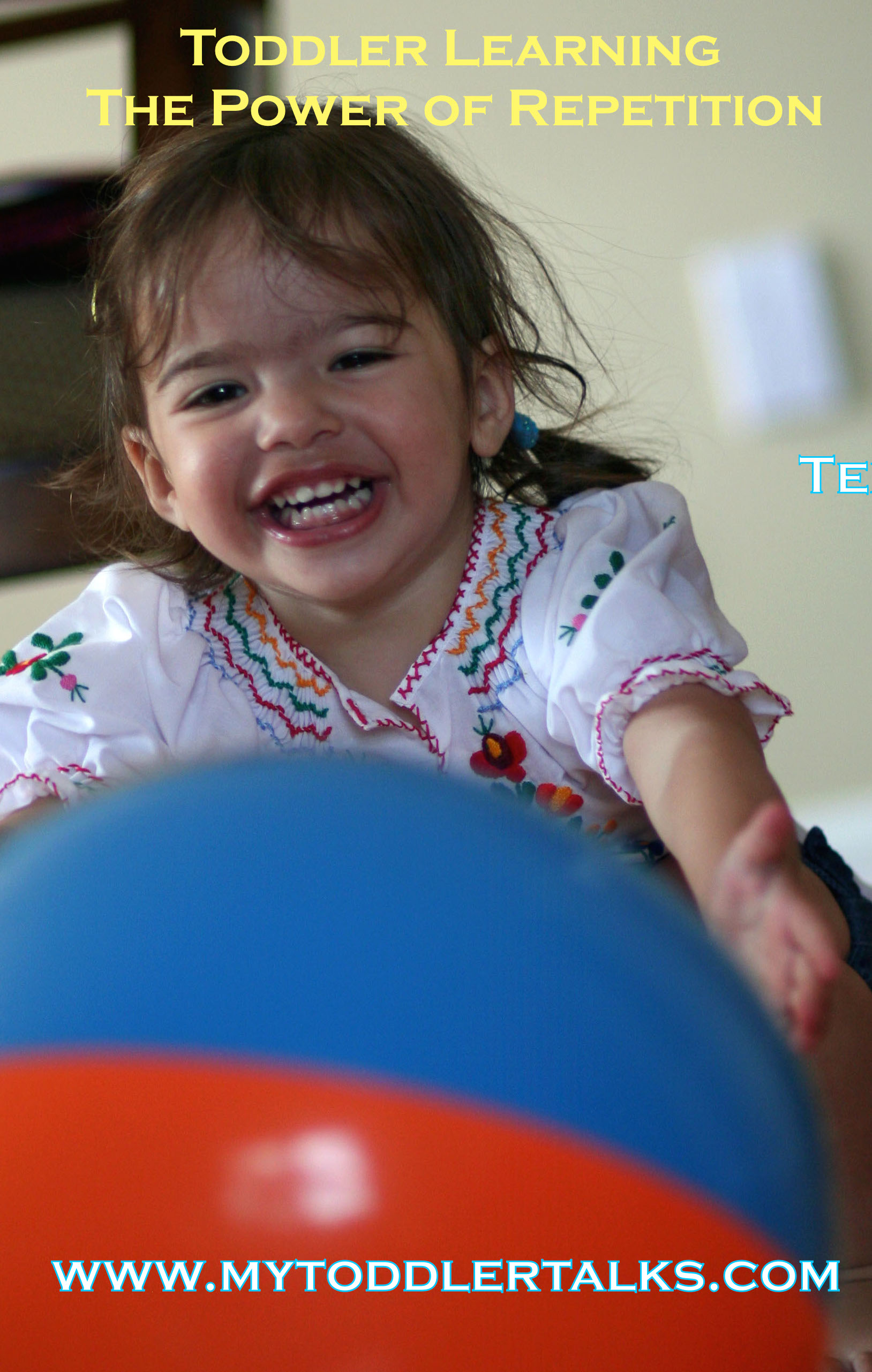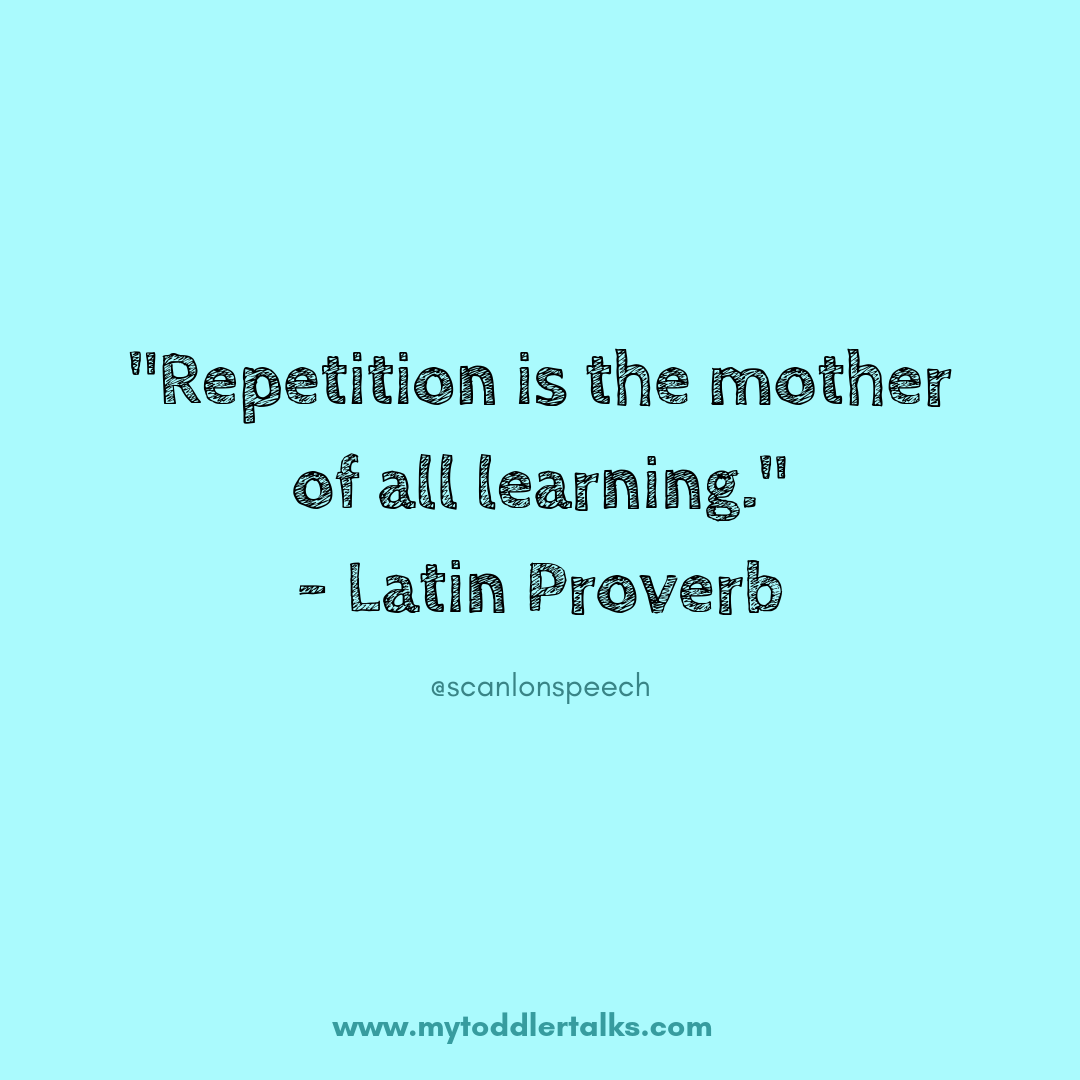Speech Therapy for Toddlers: The Power of Repetition
Speech Therapy with Toddlers: The Power of Repetition
First session of the day and I’m pumped. My little guy sees me and a huge smile spreads across his face.
He immediately runs into the living room and retrieves the beach ball. He happily shouts, “baw, baw, baw” and throws it to me.
Photo Credit: ECho-Photo
Now I smile.
Mom sees the beach ball, rolls her eyes with a grin and says to Hank, “Why don’t we do a different activity? We’ve been doing this one for the past 2 sessions.“
My mentality is different though.
If he likes it, isn’t bored and is learning, let’s keep to it and further build on it.
Here are two reasons why I like to repeat play routines:
They like it. Toddlers like repetition. Seeing the same thing happen each time is reassuring and quite fascinating. “Will X happen if I do Y?” Repetition helps them to realize they have some control in producing an expected result. As most of us know, toddlers like control.
Practice, practice, practice. Repetition gives toddlers a chance to practice a new skill. Good, focused practice leads to acquisition and mastery. Think about the last time you learned a new skill. Maybe yoga? When learning anything new you have to carefully pay attention and focus. Your movements are not yet fluid. You have to consciously think about where you’re placing your hands, your feet, and your legs because the motor plan is not yet established. The more you practice though, the better you get. You don’t have to think so much about the mechanics of the movements. Rather, you work on improving your movements. It’s the same thing with toddlers! Their language improves when they have a chance to repeatedly practice.
When Hank and I first started with the beach ball play routine, Hank struggled to do anything really interactive with it. He could kick, throw, somewhat catch, and bounce it but his play was short-lived AND he didn’t say anything while he played. There was little to no language.
You may be thinking –
Please this is only a beach ball?
How sophisticated is play with a beach ball?
There’s A LOT you can do with a beach ball. Please scroll to the end of this post for some ideas!
How did I start the play routine?
I started by simply showing him the beach ball.
Next, I gave the ball to him and let him do anything he wanted with it (throw, bounce, roll, catch, etc).
Then, I quickly retrieved the ball and copied him but did so in a playful manner while simultaneously emphasizing a word.
For instance, if Hank rolled the ball, I quickly retrieved it, and rolled it back to him while saying “roll” or “roll the ball”.
This seems simple, right?
That’s because it is.
This simple play routine continues until a variation or change up is needed. I vary it just BEFORE I sense the child is about to get bored.
So, if I rolled it to him, I may try to roll it under the table, roll it into a hole, roll it to mommy or daddy, or roll it between my legs.
The play routine really gets going, once the toddler realizes that each person takes a turn and has a chance to decide what to do with the ball!
For example, mom may roll the ball to the couch, I may roll the ball into the kitchen and Hank may roll the ball into his stuffed animals and say “Ooops!”
Don’t forget – the person who’s next has to quickly retrieve the ball. This makes it fun (you may burn some calories in the process too).
Lastly, remember to model, say, and REPEAT not only the play routine but the words you want your toddler to say!
Use all the language elicitation techniques outlined in My Toddler Talks for assistance or subscribe to my newsletter to receive my CHEAT SHEET.
What else can you do with a beach ball?
Click on the photo above for some more ideas.
Happy playing!
In need of some additional free and helpful resources? Please subscribe to my newsletter. I share information and handouts exclusively with my newsletter subscribers.
If you have enjoyed reading My Toddler Talks, please help spread the word. Tell your friends, write an honest review on Amazon, click the social media buttons or personally give me your feedback. I love hearing from my readers and value your input.
Thanks for reading!



